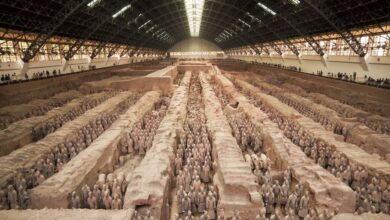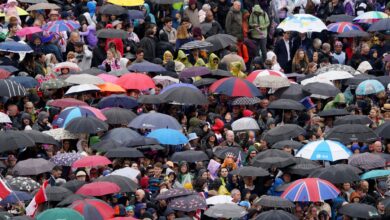Lego as an investment vehicle you can’t play with? You couldn’t make it up

It’s a long time since anyone gave me Lego for Christmas, but if they did, I’d probably not even open the box, let alone actually build a scale model of the Battleship Potemkin or the Real Madrid Santiago Bernabéu Stadium. As stock markets struggle to make progress, crypto follows a volatile random path to ruinous oblivion, and the housing market looks set to crash, people are turning to the plastic toy construction kits to protect their wealth. It’s not the BRICs economies (Brazil, Russia, India, China) we’re advised to invest in, or even bricks and mortar, but Lego bricks, in the form of sought-after sets – as long as the box is completely unopened and undamaged. You must not under any circumstances actually play with the stuff, because that will render it worthless. Yes, it’s a little mad.
It can be lucrative, though. A recent article in The Times noted that Lego has outperformed the FTSE 100 and gold for returns on investment over an extended period. There are websites and social media accounts run by Lego tycoons that track the value and the profits that can be made, and it all sounds highly tempting. Like Star Wars figures and rare classic cars, Lego memorabilia has shot up in value, and people are bragging about their capital gains: a Marvel Avengers Iron Man set bought for £6.60 last year recently sold for £22, and a Creator Propeller Plane bought for the same amount just sold for £19.69, noted The Times. Dizzying stuff. In such an atmosphere, avarice can overwhelm folk. Imagine how much you might make if you bought enough £649.99 Imperial Star Destroyers from the Star Wars Ultimate Collector Series. Why, you could buy a real house, not a Lego one.
At which point we need to point out a few things. The first, and most important, is that this may well be a bubble – and like any other investment bubble, from the tulip mania of the 18th century to the dotcom phenomenon of the late 1990s, it can burst spectacularly. Only the most collectable items, and those kits that Lego stop making, stand much chance of delivering riches. Plus, fashion is always going to be an important factor. And where the Fed goes with interest rates.
So it’s mad, but also a bit sad. I could never really “get” Lego in the old days, because the “rules” were so rigid, much like the bricks themselves. They all had to be rectangular, with only a couple of round ones. Thus amateur Lego-based architects and engineers couldn’t really let their imaginations run that wild, and building a car – even a boxy Volvo, say – was an impossibility. You’d have to make it truly massive, life-sized, so that the jagged edges of all the bricks created the illusion of a disc. This was plausible for the purposes of marketing stunts at toy fairs or Hamleys, but not so much in your living room. It really was limited. The human form was also obviously out of the question for any aspiring acrylonitrile-butadiene-styrene-brick-based Rodins. Lego was boring. It was “square”. Contrary to the propaganda, it didn’t allow for kids to develop their sense of form and proportion. Racing Hot Wheels on bits of plastic racetrack was more my thing. Still is.
Yet the toy probably always had a part to play in parents bonding with their children, and the predesigned Lego kits added a whole new dimension. One aficionado of Lego in its Nineties guise told me: “I loved Lego when I was growing up. It represented valuable one-on-one time with my dad. No matter how tired he was, he’d make time to build Lego models with me. The Millenium Falcon was my Everest! I finally finished that with my dad after what seemed like aeons – even if it was probably only about three days. I cherish those moments.”
OK, maybe I was being a bit cynical. But by then, Lego was easier-going about its conventions than it was in my youth, with all those action figures – with faces and almost anatomically correct bits! Lego has got much more going for it these days, but now it’s so potentially valuable as an investment (as well as just expensive), we’re growing too timid to play with it. Yet that’s what it’s for. Lego bricks aren’t gold bullion bars.
I once saw James May, the acceptable face of Clarksonism, buy lots of rare classic Hornby railway sets and rolling stock for one of his telly shows. All boxed and mint, they were handled like Roman antiquities by the shopkeepers as they were handed over. May got home and joyfully ripped them from their packaging, then got them moving, crashing and falling off the tracks, just as had been intended when they came out of a factory back in 1960 or something. I suppose, if and when the Lego bubble bursts, that’ll be a way for its new tribe of overgrown schoolkids to console themselves, and finally get their money’s worth out of Model 71043, Hogwarts Castle, a 6,020-piece set with 27 microfigures that retails for £409.99. Magical.





